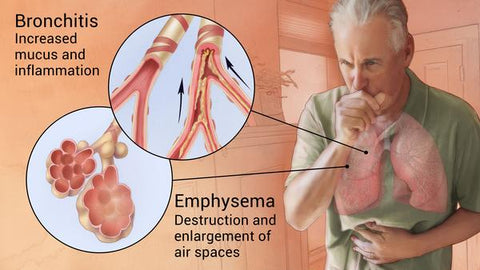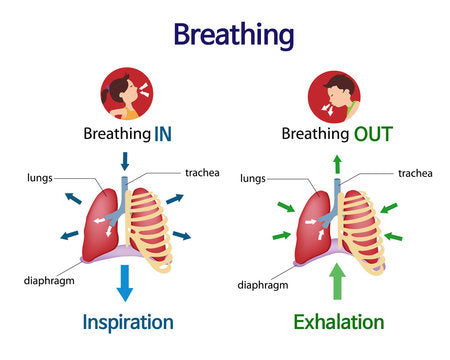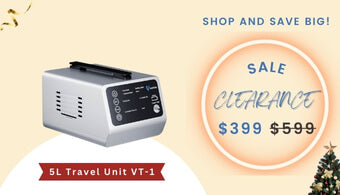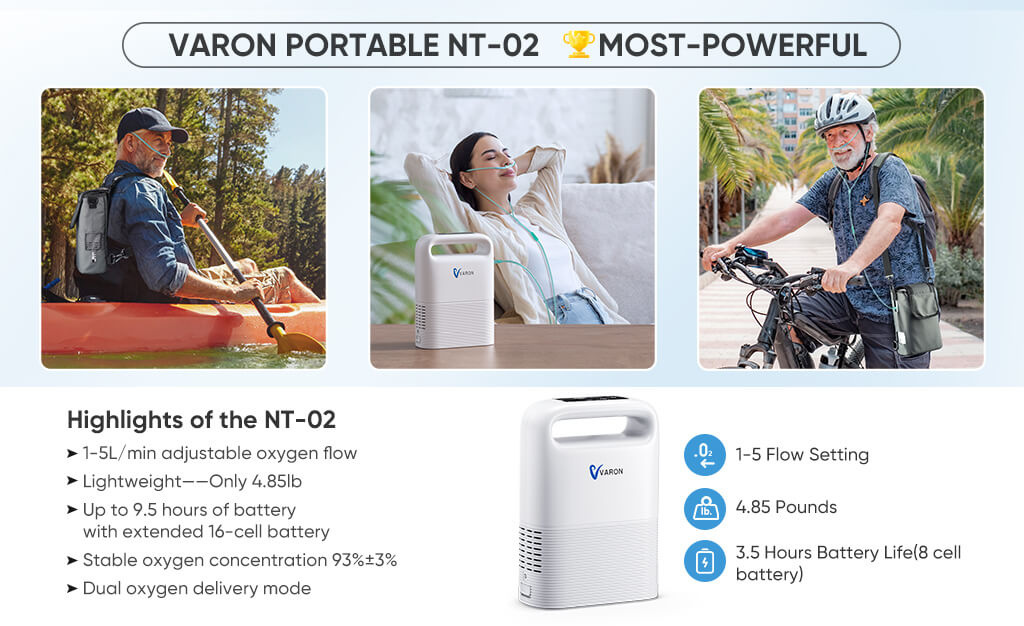Chronic obstructive pulmonary disease (COPD) can make even the simplest tasks feel overwhelming due to persistent breathing difficulties. If you've been diagnosed with COPD, you're not alone. Millions around the world face this progressive lung condition. The good news is, there are ways to manage COPD and improve your quality of life. This includes breathing exercises to strengthen your lungs and, in some cases, oxygen therapy to provide supplemental oxygen and ease your breathing struggles.
This blog post will delve into the world of COPD and oxygen therapy, exploring the benefits of both breathing exercises and oxygen therapy, and empowering you to take control of your COPD management journey.
Understanding COPD: What is COPD?
Chronic obstructive pulmonary disease (COPD) is a progressive lung condition that makes breathing difficult. It's often caused by long-term exposure to irritants like cigarette smoke or air pollution. COPD damages your lungs, making it harder for them to work properly. This can lead to shortness of breath, coughing, wheezing, and chest tightness.

What Causes COPD?
The primary culprit behind COPD is cigarette smoking. Inhaling smoke irritates and inflames the airways in your lungs. Over time, this inflammation can lead to:
- Destruction and Enlargment of air sacs (emphysema): These tiny sacs are responsible for exchanging oxygen and carbon dioxide in your lungs. When they're damaged, your body struggles to get the oxygen it needs.
- Increase Mucus and Inflmmation (chronic bronchitis): The lining of your airways becomes thickened and inflamed, making it harder for air to flow in and out of your lungs.
While smoking is the leading cause, other factors can contribute to COPD, including:
- Long-term exposure to air pollution: This can come from traffic fumes, industrial emissions, or even secondhand smoke.
- Occupational dusts and chemicals: Workers in certain industries, like construction or mining, may be exposed to irritants that damage their lungs.
- Alpha-1 antitrypsin deficiency: This is a rare genetic condition that can lead to emphysema.
Complications of COPD
Untreated COPD can lead to a number of serious complications, including:
- Respiratory infections: People with COPD are more susceptible to respiratory infections like pneumonia, which can further worsen their breathing problems.
- Heart disease: COPD can strain your heart as it works harder to pump oxygen throughout your body.
- Lung cancer: Smokers with COPD are at a higher risk of developing lung cancer.
- Exacerbations: These are sudden worsening of COPD symptoms that may require hospitalization.
Predisposing Factors of COPD
Certain factors can increase your risk of developing COPD, including:
- Smoking history: The longer and more you smoke, the higher your risk of COPD.
- Age: COPD is more common in older adults, but it can develop in younger people who smoke heavily.
- Family history: If you have a close family member with COPD, you may be at higher risk.
- Genetic factors: Alpha-1 antitrypsin deficiency is a rare genetic condition that can increase your risk of COPD.
Treatment Options for COPD Management
While there's no cure for COPD, there are treatments available to manage the condition and improve your quality of life. These include:

- Smoking cessation: The most crucial step is quitting smoking to prevent further damage to your lungs.
- Medications: Bronchodilators help relax the muscles around your airways, making it easier to breathe. Inhaled corticosteroids can reduce inflammation in your airways.
- Pulmonary rehabilitation: This program teaches you breathing exercises and other techniques to manage your COPD symptoms and stay active.
- Oxygen therapy: In some cases, supplemental oxygen may be needed to help you breathe.
- Surgery: In severe cases, surgery may be an option to remove damaged lung tissue.
Taking Control of Your COPD
By following a health care treatment plan, you can manage your COPD and live a full and active life. This includes:
- Getting regular checkups: Your doctor can monitor your COPD and adjust your treatment plan as needed.
- Staying active: Regular exercise can help improve your lung function and reduce symptoms.
- Eating a healthy diet: A balanced diet can help you maintain a healthy weight and provide your body with the nutrients it needs to function properly.
- Getting vaccinated: People with COPD are more susceptible to respiratory infections. Getting vaccinated against influenza and pneumonia can help prevent these illnesses.
By taking control of your COPD management, you can breathe easier and enjoy a better quality of life.
COPD Symptoms and When to Consider Oxygen Therapy
The earlier you recognize the signs of COPD, the sooner you can seek treatment and manage the condition. Here are some common symptoms of COPD:

- Shortness of breath: This is often the most noticeable symptom, especially during physical activity. You may feel "winded" easily or struggle to catch your breath.
- Wheezing: A whistling sound heard during exhalation due to airway narrowing.
- Chronic cough: A persistent cough that produces mucus (phlegm) may be present.
- Chest tightness: You may feel a sensation of tightness or pressure in your chest, especially when inhaling deeply.
- Fatigue: COPD can make you feel tired and sluggish, even after minimal exertion.
In some cases, oxygen therapy can help you breathe more easily. Oxygen therapy involves using a machine to deliver supplemental oxygen to your lungs. This can be done at home or while you're out and about with a portable oxygen concentrator.
Benefits of Breathing Exercises for COPD Management
Breathing exercises can be a helpful addition to your COPD management plan. They can help improve lung function, reduce shortness of breath, and make daily activities easier. Here are two common breathing techniques:

- Pursed-lip breathing: Breathe in slowly through your nose for 2 seconds, then purse your lips as if you're about to blow out a candle. Exhale slowly and steadily through your pursed lips for 4-6 seconds. Repeat this exercise for 5-10 minutes several times a day.
- Diaphragmatic breathing: Relax your shoulders and focus on using your diaphragm (the muscle below your lungs) to breathe. Place one hand on your chest and the other on your stomach. As you inhale slowly through your nose, feel your stomach push outward. Then, exhale slowly through pursed lips, feeling your stomach pull inward. Repeat this exercise for 5-10 minutes several times a day.
The VARON 5L Portable Oxygen Concentrator NT-02: Supporting an Active Life with COPD
At OxygenVIP, we understand the challenges faced by people living with COPD. That's why we offer the VARON 5L Portable Oxygen Concentrator NT-02, designed to provide reliable and convenient oxygen therapy on the go.
Key Features of the VARON 5L Portable Oxygen Concentrator NT-02
- Ultra-portable: Weighing only 4.85 lbs, the NT-02 is one of the lightest 5L portable oxygen concentrators available. Its backpack design with three carrying options (handheld, cross-body, or over one/both shoulders) makes it comfortable to carry during outdoor activities.
- Dual Oxygen Delivery Modes: The NT-02 delivers oxygen in two modes: sensor mode (supplies oxygen upon inhalation detection) and continuous flow mode (delivers oxygen every 3 seconds if inhalation is too weak). This ensures a reliable oxygen supply.
- Long Battery Life: The NT-02 is powered by a high-capacity 6400mAh battery that provides up to 4 hours of use time. Optional 8-cell (up to 7 hours) and 16-cell (up to 9.5 hours) batteries allow you to extend your oxygen therapy without needing an outlet.
- Adjustable Flow Rate: The NT-02 offers adjustable oxygen flow rates from 1-5 L/min, allowing you to personalize your oxygen therapy based on your doctor's recommendations.
- Stable Oxygen Concentration: The NT-02 guarantees a high oxygen concentration of 93%±3%, delivering pure, concentrated oxygen with every breath.
- Complete Set of Accessories: The NT-02 comes with everything you need to start oxygen therapy, including a carrying case, nasal cannula, AC power adapter, DC power adapter, and a user manual.
Living with COPD: The Importance of a Healthy Lifestyle
In addition to medication and breathing exercises, maintaining a healthy lifestyle can significantly improve your quality of life with COPD. Here are some key areas to focus on:

- Quitting smoking: If you smoke, quitting is the single most important step you can take to slow the progression of COPD and improve your symptoms.
- Maintaining a healthy weight: Being overweight or obese can make breathing more difficult for people with COPD. Losing weight, if necessary, can significantly improve your symptoms and overall health.
- Eating a balanced diet: A healthy diet rich in fruits, vegetables, and whole grains can provide your body with the nutrients it needs to function optimally and fight off infections.
- Regular exercise: Regular physical activity can help improve lung function, reduce shortness of breath, and increase your stamina. Choose exercises you enjoy and talk to your doctor about an appropriate exercise program for you.
- Getting enough sleep: When you're well-rested, you'll have more energy to manage your COPD symptoms and participate in daily activities.
- Managing stress: Stress can worsen COPD symptoms. Relaxation techniques such as yoga, meditation, or deep breathing can help you manage stress and improve your overall well-being.
Additional Resources and Support
COPD is a common condition, but there are resources and support available to help you manage it. Here are some helpful resources:
- National Heart, Lung, and Blood Institute (NHLBI): https://www.nhlbi.nih.gov/
- American Lung Association: https://www.lung.org/
- COPD Foundation: https://www.copdfoundation.org/
- Support groups: Connecting with other people who have COPD can provide valuable support and encouragement.
Conclusion
COPD can be a challenging condition, but with proper management, breathing exercises, and potentially oxygen therapy, you can still live a full and active life. By following your doctor's recommendations, maintaining a healthy lifestyle, and seeking support when needed, you can manage your COPD and enjoy a good quality of life.
Ready to take control of your COPD and live an active life? The VARON 5L Portable Oxygen Concentrator NT-02 can be a valuable tool in your COPD management plan. With its portability, long battery life, and reliable oxygen delivery, the NT-02 allows you to maintain your independence and participate in the activities you enjoy.
Visit OxygenVIP website today to learn more about the VARON 5L Portable Oxygen Concentrator NT-02 and how it can help you breathe easier and live a fuller life with COPD.


















